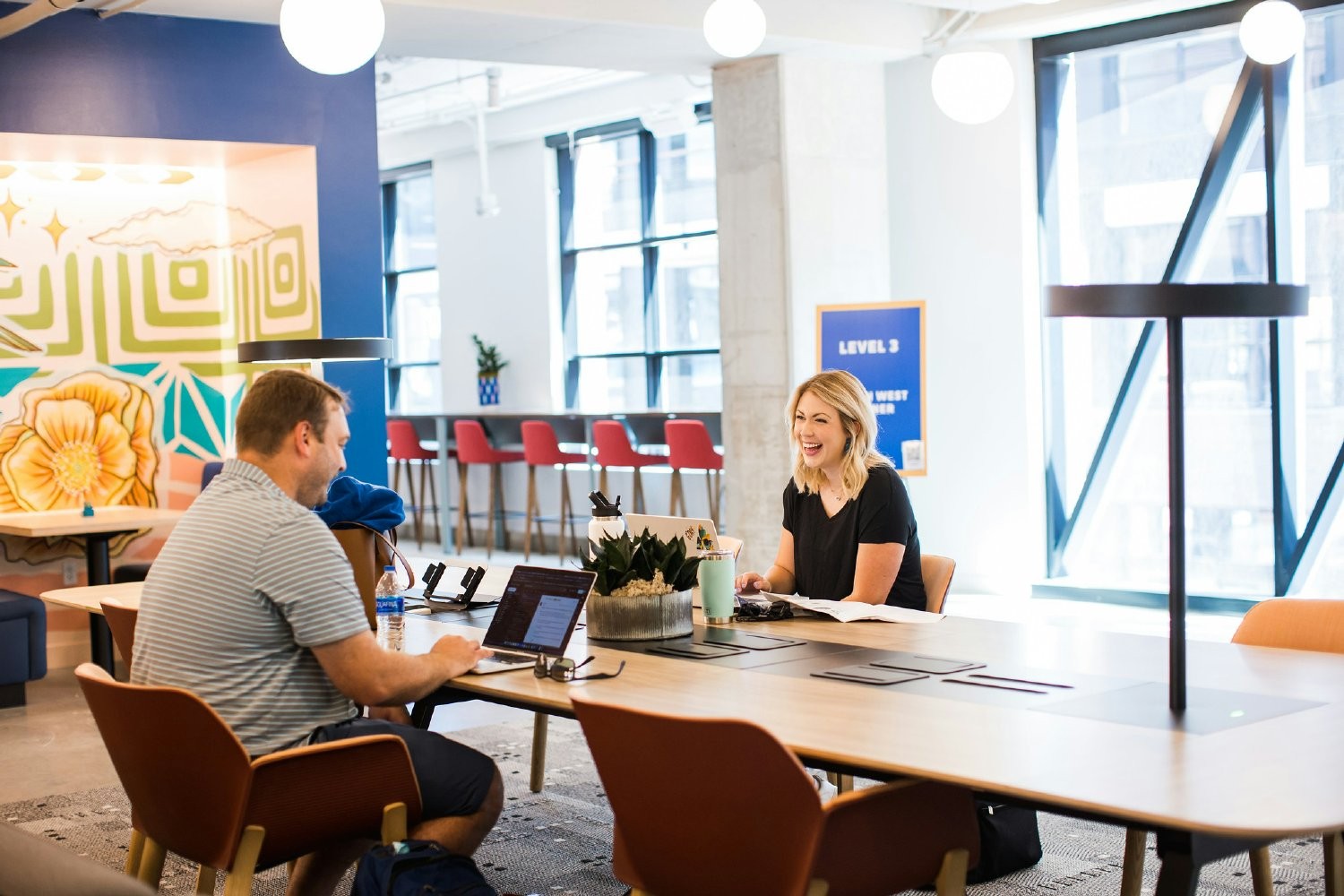By Claire Hastwell and Ed Frauenheim.
On March 9, the Great Place To Work® office closed and those of us used to commuting to our Oakland office started what we thought would be a week of remote work.
That was also the last time I drank at a bar in San Francisco. The bartender shook my hand to make me feel at home.
Later came the face masks. It was a shock, like something out of a dystopian novel. Fast-forward 3 months and I'm shopping on Etsy for patterned masks stitched by an artist in Milwaukee. Donning them daily is my new routine.
It’s remarkable how quickly humans adapt. We reframe fear as fashion statements. We recast ironing boards as stand-up desks.
We see Best Workplaces™ taking the same creative, positive approach to their return to the office.
Working life has reached a new era, and Best Workplaces view these changes as an opportunity for reinvention. Researchers at McKinsey agree, saying, "more than ever, it is an opportunity to reimagine what work could look like."
With so much at stake, how do you reinvent the workplace while keeping your people safe?
Here's how to keep the employee experience at the center of your return to work strategy:
Listen (and keep listening)
From chat streams to regular pulse surveys, many Best Workplaces have set up listening channels dedicated to concerns around the pandemic.
Best Workplaces like Dixon Schwabl and Credit Acceptance are tapping these sources for their return to work strategies, sending employee surveys to understand how to best move forward for their people. They will use the information collected from those surveys to understand:
- How many people want to return
- What are the reasons for those wanting to return
- What key concerns are about returning
These are essential data points for developing a plan which ensures those who return can do so safely.
Provide clarity – and soon
The uncertain timeline for offices reopening makes it difficult for employees to feel closure. Free them from turning over "when?" and "how?" in their minds by giving them your organization’s plan and next steps as soon as possible.
People today trust their employer more than other institutions. Leaders can build on that trust by providing clear guidelines on how to return to work safely, and by pointing to sound, scientific sources of information.
Personalize employees’ return
How employees handle the changes varies depending on their geography, on their home life and the nature of their work:
- For some, social distancing has been a tragedy for its loneliness
- For others, it has squeezed family relationships as much as budgets
- And for frontline employees, work is a daily threat to health
No one solution fits all cases. Leaders need to ask each employee how they want to return to physical work and make that return as voluntary as possible.
Walk a mile in their shoes
Executives who ask workers to do things they wouldn't be willing to do themselves are not setting the tone for fairness.
Leaders asking employees to return to kitchens, shop floors and cubicles can increase trust and psychological safety by showing up in those places — and showing how work can resume safely.
Executives at food products maker FONA International have gone a step further. Members of the executive team have personally spent evenings and weekends disinfecting company offices, labs and locker rooms.
Even if you don't directly clean company facilities, at least walking a mile in the shoes of your people as you reopen will go a long way.
Co-create the new workplace
Employees on the front lines often have great ideas about how to do their jobs better. The best way to discover how to effectively combine social distancing, risk mitigation and efficient operations is to ask your people.
In other words, now is the time to embrace Innovation By All™, inviting everyone to contribute to new products and processes.
Co-creating the new workplace with all employees — no matter who they are or what they do for the organization — will not only take care of everyone, it will give you the most game-changing ideas.
Connect your people to a higher purpose
In times of distress, our priorities become clear and the superfluous gets thrown overboard.
Right now, helping is the priority and many Best Workplaces are refocusing on community and giving.
As psychotherapist Esther Perel explains, during crises, our altruistic side calls us to help those less fortunate. "So many people want to be helpful, want some sense of purpose, want to feel less guilty about the fact that they have more than others right now."
We see this desire to help in employee survey comments. "When COVID-19 hit - many employees on were speculating on how we could donate PTO time to the folks that wouldn't be able to do any work from home," an employee at technology firm Workiva said in their employee survey.
Effective leaders emphasize their organization’s highest calling and create opportunities for employees to help around them.
Trust your teams to do the work
Of the teams that were able to pivot to remote work so successfully – trust enabled the preconditions for this rapid change.
A company culture marked by suspicions that employees are slacking off is costly to employees' psychological safety and productivity. At high-trust workplaces, remote employees do not have to overcome these suspicions and are free to do their best work.
Many companies are announcing a permanent WFH situation. For this model to succeed, trust is an essential factor. And that is a very good thing - the more trust you extend to your people, the more they can excel.
Trust your people and give them full flexibility about how, when and where they do their work.
Continuously build on your successes
Many teams have found that they are more productive working from home. Some mention the value of removing the stress of commuting and balancing domestic duties.
When you tune into the success stories your people share from their work-from-home experiences, you can discover inspiration and ideas to guide how you want to operate in the future.
Sailing into the unknown
The wisest business leaders today are reframing returning employees to work. We may not be returning to a place we recognize, even if the office location is the same. Reopening the economy is a dicey balancing act between protecting lives and livelihoods.
It is a time for great care. But also, a time of great possibility.
Need help on your return to work strategy?
Surveying your employees and understanding their unique needs is the first step. Reach out to us today about how our employee surveys and engagement platform can help your business (and your people).









